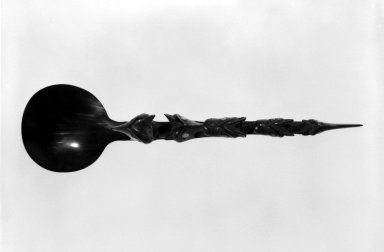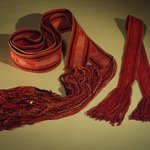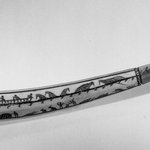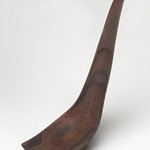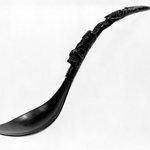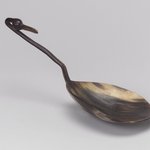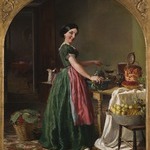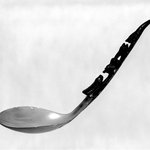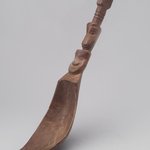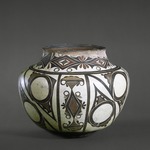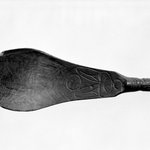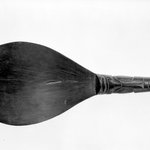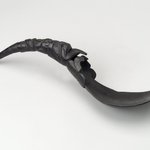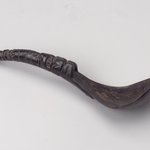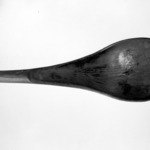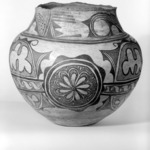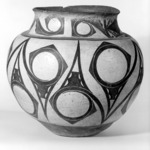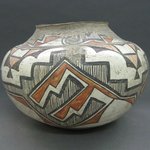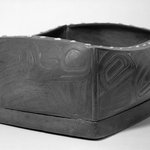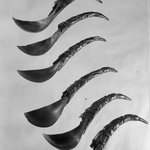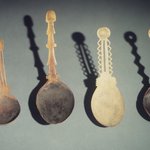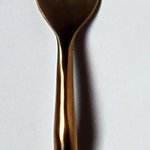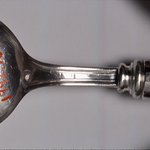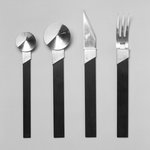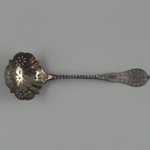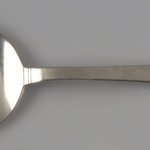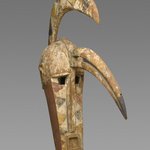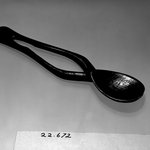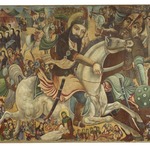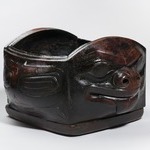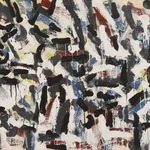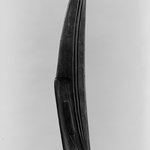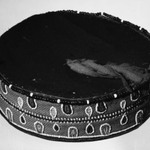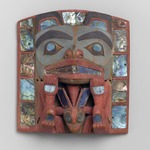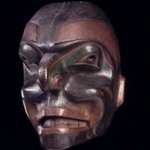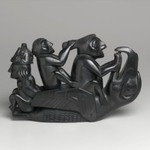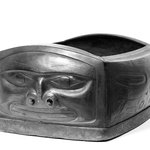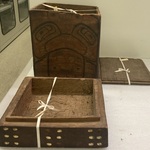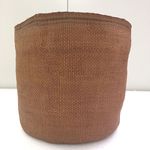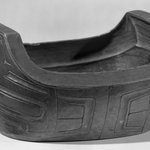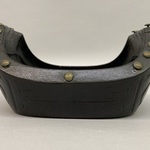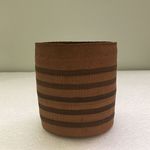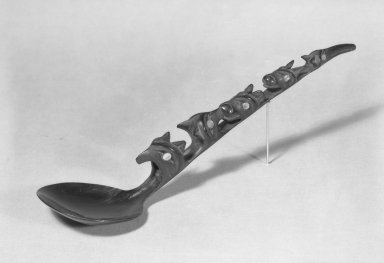
Carved Spoon with Five Animal Heads
Arts of the Americas
On View: Luce Visible Storage and Study Center, 5th Floor
Every Northwest Coast family had a supply of spoons. Those for common household purposes were of the same shape and materials as feast spoons, though undecorated. Feast spoons such as this example were brought out, in the same way as fine china or best silverware in other cultures, when a family gave a celebratory feast or when visitors arrived from another village. The number of feast spoons was determined by the magnificence of the feast the family could afford. This Haida spoon was delicately carved from a single piece of goat horn and decorated with five animal heads, each with abalone-shell eyes. Before carving, the horn was steamed until pliable, bent into shape, and cooled in a mold.
CULTURE
Haida
MEDIUM
Horn, mother of pearl
GEOGRAPHICAL LOCATIONS
- Possible place made: Canada
- Possible place made: United States
DATES
late 19th–early 20th century
DIMENSIONS
7 1/2 x 1 15/16 in. (19 x 4.9cm)
(show scale)



COLLECTIONS
Arts of the Americas
ACCESSION NUMBER
52.4.3a
CREDIT LINE
Gift of Elizabeth Achelis
CATALOGUE DESCRIPTION
This spoon is carved in one piece. The handle has five animal heads, very deeply carved and standing out along the handle. All the animals have abalone shell eyes.
MUSEUM LOCATION
This item is on view in Luce Visible Storage and Study Center, 5th Floor
CAPTION
Haida. Carved Spoon with Five Animal Heads, late 19th–early 20th century. Horn, mother of pearl, 7 1/2 x 1 15/16 in. (19 x 4.9cm). Brooklyn Museum, Gift of Elizabeth Achelis, 52.4.3a. Creative Commons-BY (Photo: Brooklyn Museum, 52.4.3a_acetate_bw.jpg)
IMAGE
overall, 52.4.3a_acetate_bw.jpg. Brooklyn Museum photograph
"CUR" at the beginning of an image file name means that the image was created by a curatorial staff member. These study images may be digital point-and-shoot photographs, when we don\'t yet have high-quality studio photography, or they may be scans of older negatives, slides, or photographic prints, providing historical documentation of the object.
RIGHTS STATEMENT
Creative Commons-BY
You may download and use Brooklyn Museum images of this three-dimensional work in accordance with a Creative Commons license. Fair use, as understood under the United States Copyright Act, may also apply.
Please include caption information from this page and credit the Brooklyn Museum. If you need a high resolution file, please fill out our online application form (charges apply).
For further information about copyright, we recommend resources at the United States Library of Congress, Cornell University, Copyright and Cultural Institutions: Guidelines for U.S. Libraries, Archives, and Museums, and Copyright Watch.
For more information about the Museum's rights project, including how rights types are assigned, please see our blog posts on copyright.
If you have any information regarding this work and rights to it, please contact copyright@brooklynmuseum.org.
RECORD COMPLETENESS
Not every record you will find here is complete. More information is available for some works than for others, and some entries have been updated more recently. Records are frequently reviewed and revised, and we welcome any additional information you might have.
